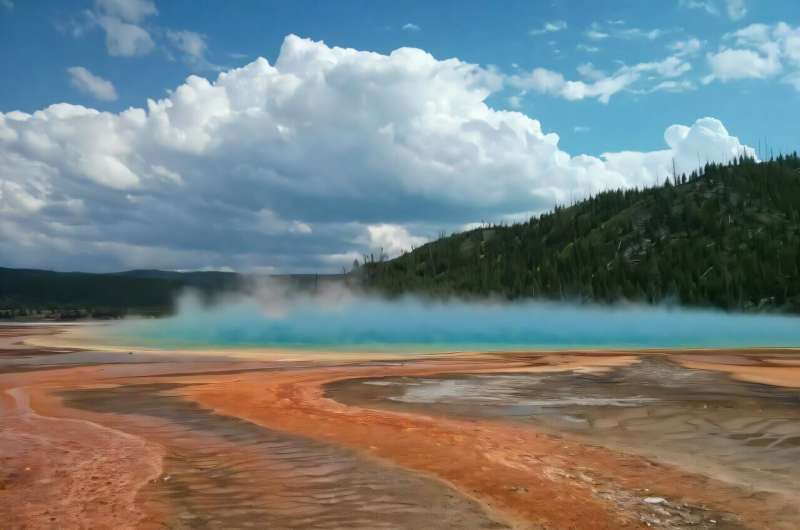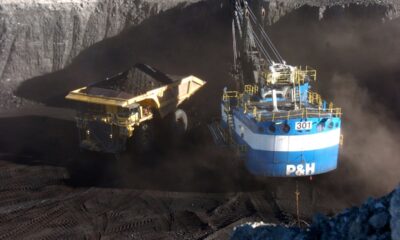Science
Machine Learning Detects Tenfold Increase in Yellowstone Earthquakes

A recent study has revealed a significant increase in the number of earthquakes detected in the Yellowstone caldera, with machine learning technology uncovering approximately ten times more seismic events than previously recorded. Published on July 18, 2025, in the journal Science Advances, this research was led by Bing Li, a professor at the University of Western Ontario, in collaboration with the Universidad Industrial de Santander in Colombia and the United States Geological Survey.
The Yellowstone caldera, located in parts of Wyoming, Idaho, and Montana, is known for its volcanic activity and is a popular destination for tourists. The study focused on re-evaluating historical earthquake data spanning 15 years, from 2008 to 2022. This reassessment has resulted in the cataloging of 86,276 earthquakes, significantly enhancing the understanding of the area’s volcanic and seismic systems.
One of the key findings of the study indicates that more than half of these detected earthquakes were part of earthquake swarms—clusters of small, interconnected earthquakes occurring in a limited area over a short time frame. Unlike aftershocks, which follow a larger earthquake, these swarms present a unique seismic pattern. Li noted, “By understanding patterns of seismicity, like earthquake swarms, we can improve safety measures, better inform the public about potential risks, and even guide geothermal energy development away from danger.”
Prior to the implementation of machine learning, detection of earthquakes relied heavily on manual analysis by trained specialists. This traditional method is both time-consuming and often results in the oversight of numerous seismic events. Li emphasized the limitations of conventional methods, stating, “If we had to do it old school with someone manually clicking through all this data looking for earthquakes, you couldn’t do it. It’s not scalable.”
The application of machine learning has opened new avenues for seismic research, allowing scientists to revisit extensive historical waveform data stored in various data centers worldwide. This modern approach enhances the capacity to identify current and previously unrecognized seismic regions.
The study further revealed that the earthquake swarms beneath the Yellowstone caldera are associated with relatively immature fault structures, in contrast to the more mature fault systems found in areas such as southern California. These rougher fault structures were analyzed using fractal-based models, which characterize the complexity of seismic activity. This approach demonstrates that the interaction between slowly moving underground water and sudden bursts of fluid can contribute to the occurrence of these swarms.
Li stated, “To a large extent, there is no systematic understanding of how one earthquake triggers another in a swarm. But now, we have a far more robust catalogue of seismic activity under the Yellowstone caldera, and we can apply statistical methods that help us quantify and find new swarms that we haven’t seen before.”
This innovative research not only expands the understanding of seismic patterns in Yellowstone but also has broader implications for volcanic activity monitoring worldwide. By leveraging advanced technology, scientists aim to enhance public safety and advance geothermal energy initiatives in a responsible manner.
For further details, refer to the study titled “Long-term dynamics of earthquake swarms in the Yellowstone caldera,” published in Science Advances.
-

 World1 week ago
World1 week agoCoronation Street’s Shocking Murder Twist Reveals Family Secrets
-

 Entertainment1 week ago
Entertainment1 week agoAndrew Pierce Confirms Departure from ITV’s Good Morning Britain
-

 Entertainment5 months ago
Entertainment5 months agoKate Garraway Sells £2 Million Home Amid Financial Struggles
-

 Entertainment4 months ago
Entertainment4 months agoAnn Ming Reflects on ITV’s ‘I Fought the Law’ Drama
-

 Entertainment1 month ago
Entertainment1 month agoCoronation Street Fans React as Todd Faces Heartbreaking Choice
-

 Health4 months ago
Health4 months agoKatie Price Faces New Health Concerns After Cancer Symptoms Resurface
-

 World1 month ago
World1 month agoBailey Announces Heartbreaking Split from Rebecca After Reunion
-

 Entertainment2 weeks ago
Entertainment2 weeks agoTwo Stars Evicted from I’m A Celebrity Just Days Before Finale
-

 World2 weeks ago
World2 weeks agoKevin Sinfield Exceeds Fundraising Goal Ahead of Final Marathons
-

 Entertainment4 months ago
Entertainment4 months agoCoronation Street’s Carl Webster Faces Trouble with New Affairs
-

 Entertainment3 months ago
Entertainment3 months agoWhere is Tinder Swindler Simon Leviev? Latest Updates Revealed
-

 Entertainment5 months ago
Entertainment5 months agoMarkiplier Addresses AI Controversy During Livestream Response





















